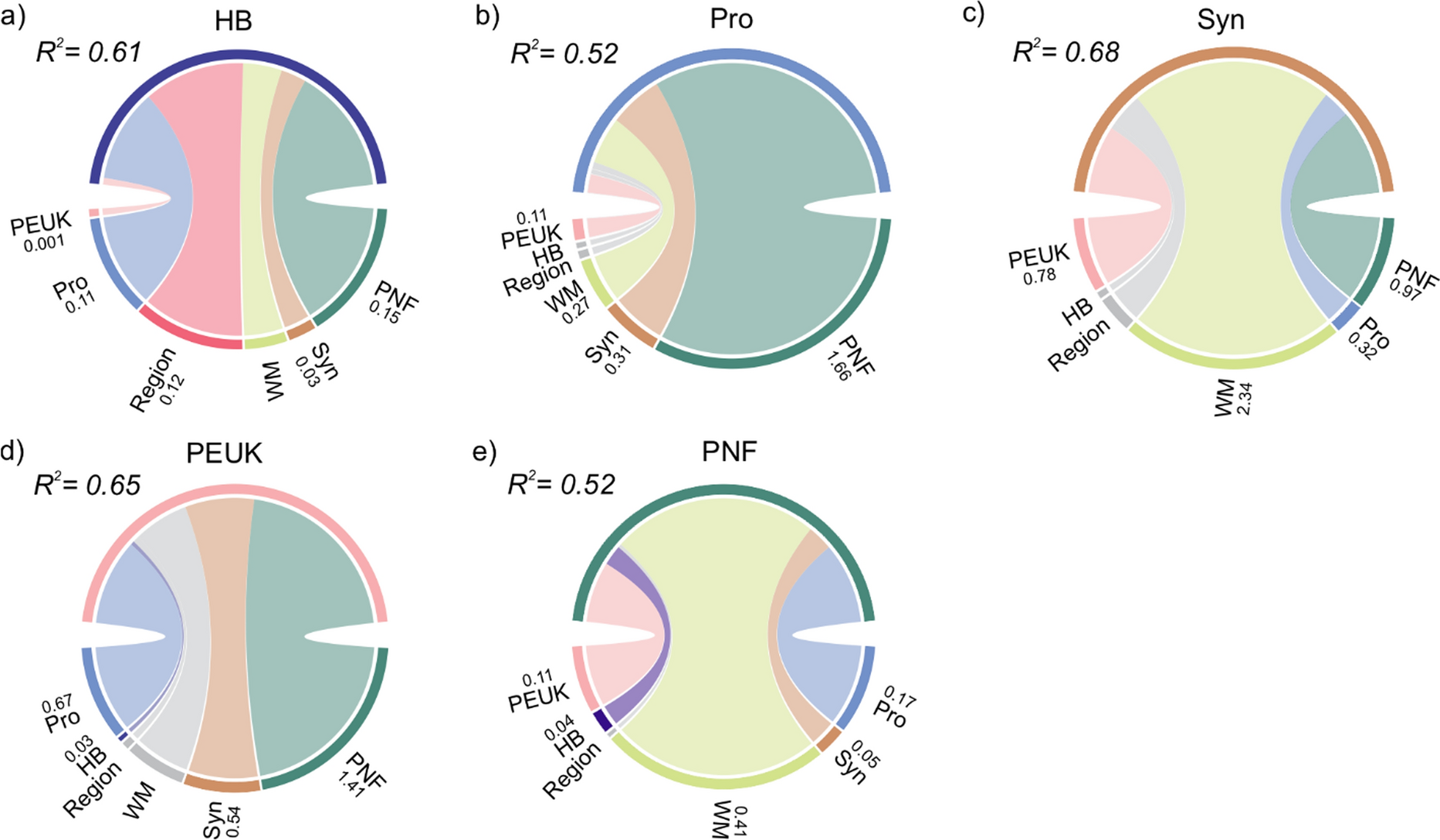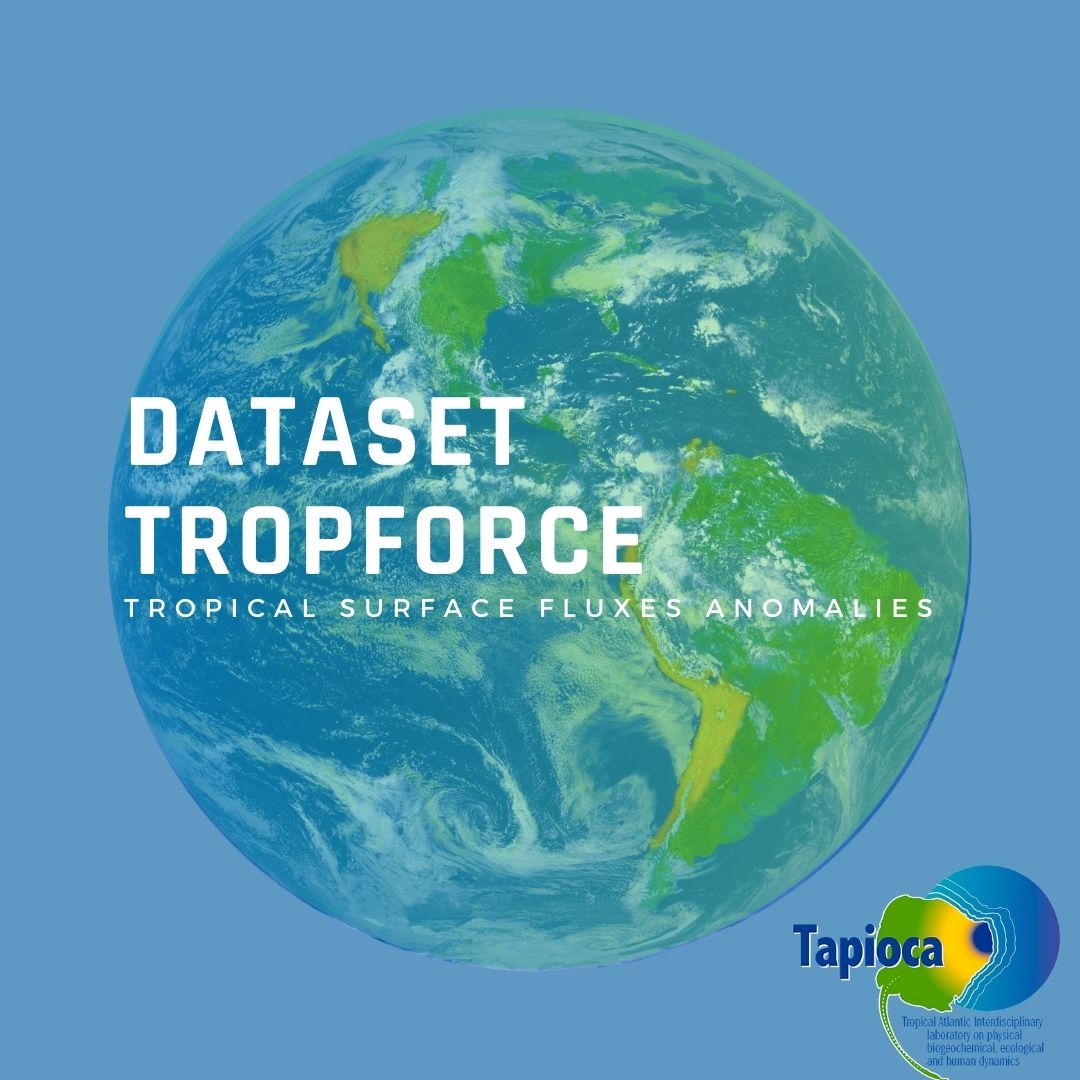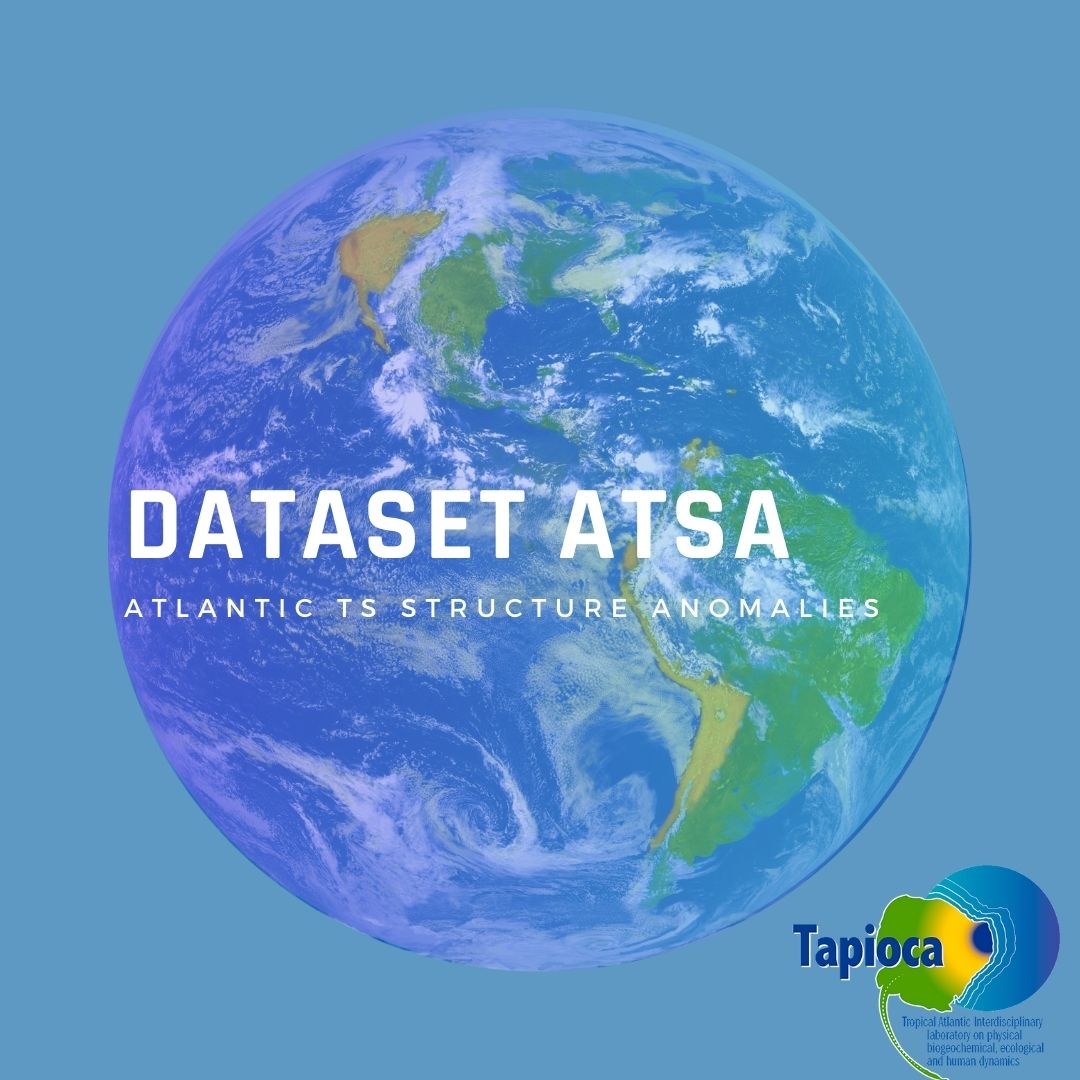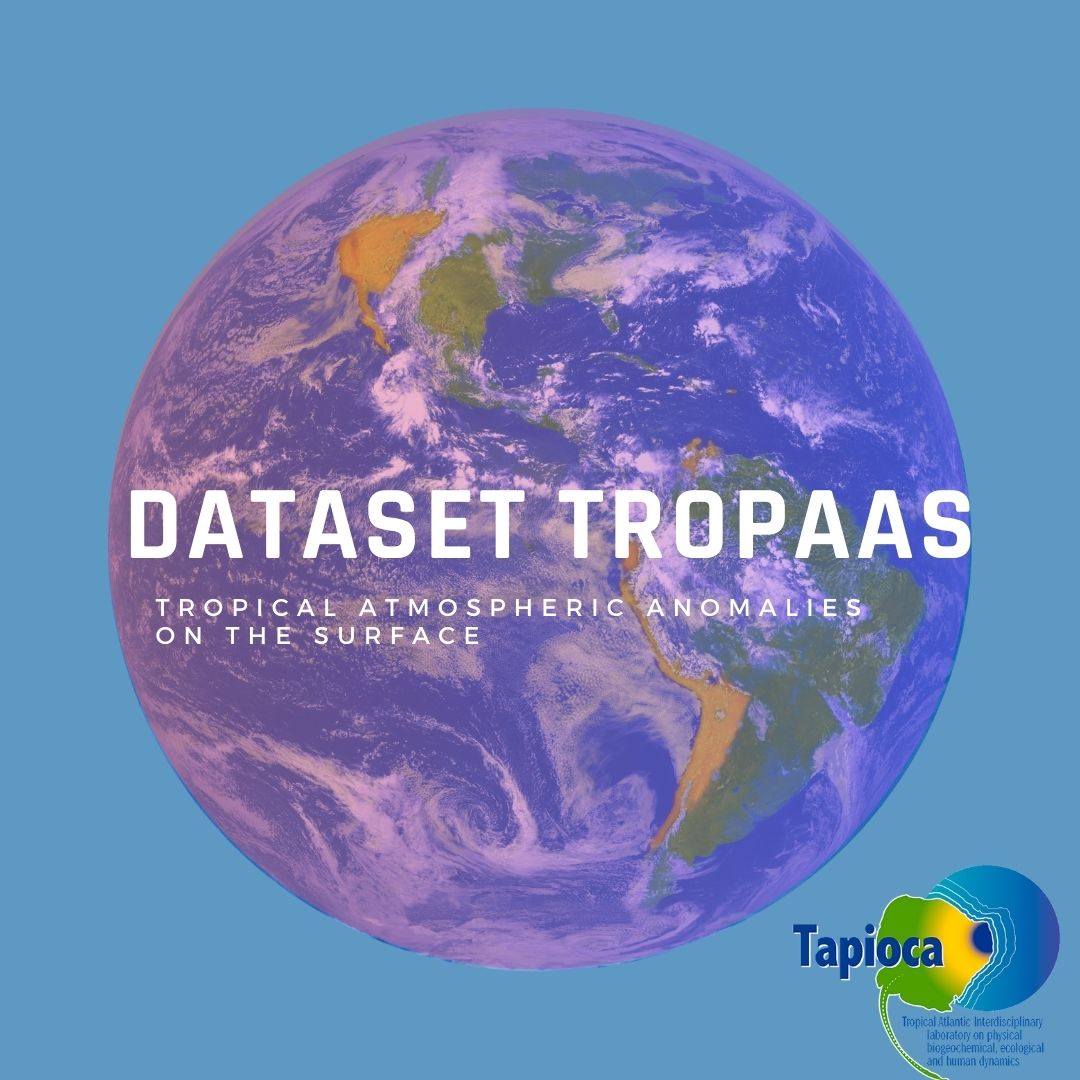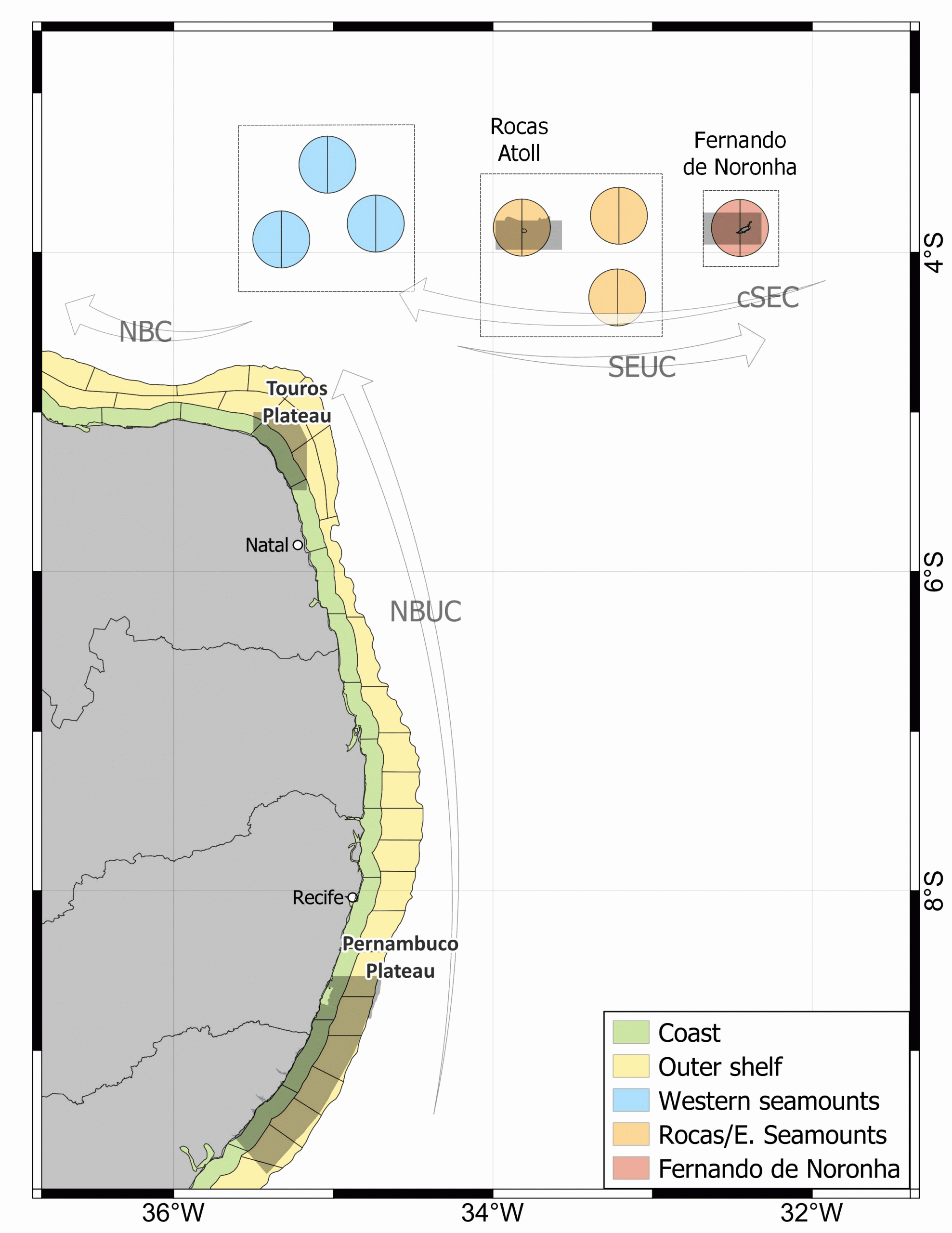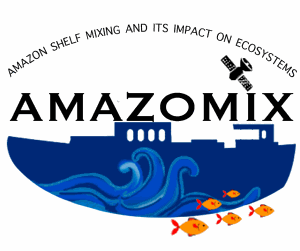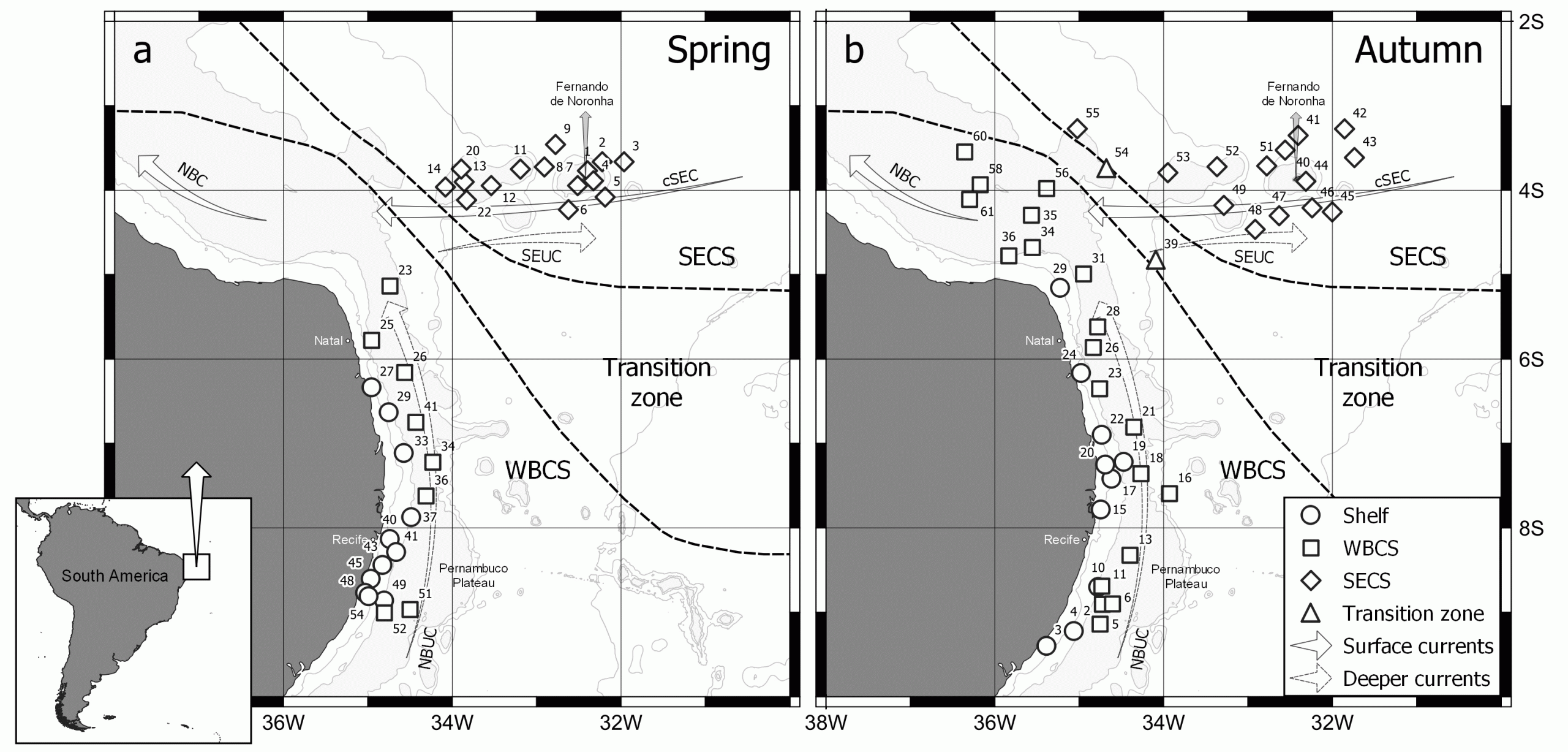The recruitment of marine species in isolated oceanic island systems can be challenged by prevailing currents, as exemplified by the Tropical Southwestern Atlantic. In this
Protected areas play a crucial role in current global policies to mitigate the erosion of biodiversity and systematic reserve site selection models are increasingly involved in
The Brazil-Malvinas Confluence (BMC) is a significant biological frontier where distinct currents meet, fostering optimal conditions for phytoplankton development. In this study we tested the
In oligotrophic oceans, trophic transfer at the base of pelagic food webs is driven by shifts in biomass ratios of plankton microbial groups, which determine
Date: 2021-12-16Authors: Humberto L. Varona; Fabrice Hernandez; Arnaud Bertrand; Carlos Noriega; Moacyr AraujoDOI: 10.11922/sciencedb.01368Description: TROPFORCE dataset is a product that contains the surface anomalies of
Date: 29 Sep 2021Authors: Humberto L. Varona, Fabrice Hernandez, Arnaud Bertrand, Moacyr AraujoDOI: 10.17632/xnx23fmhhr.1Description: This dataset contains the monthly anomalies of the TS structure of
Date: Sep 7, 2020Authors:H. L. Varona, F. Hernandez, A. Bertrand, M. AraujoDOI: doi/10.5281/zenodo.5532991Description: This dataset contains the monthly, daily and 6-hour anomalies of the wind
Date:2024-02-08Authors: Tosetto Everton, Lett Christophe, Bertrand Arnaud DOI: 10.17882/98785Description: We used the Lagrangiandispersal modelling tool Ichthyop (Lett et al. 2008) to track particles representing numerical
Date: 2021Temporal Extent: 2021-08-28 – 2021-10-08Authors: Rousselot Pierre, Cervelli Evan, Fouilland Eric, Koch-Larrouy Ariane, Lebourges-Dhaussy Anne, Meriaux Xavier, Le Ridant Arnaud, Roubaud Fabrice, Roudaut Gildas,
Data: 2022-12-03Authors: Giachini Tosetto Everton, Nogueira Junior Miodeli, Neumann-Leitão Sigrid, Costa da Silva Alex, Bertrand ArnaudDOI: 10.17882/92011Description: Abundance data (individuals.100 m-3) of planktonic cnidarians collected






